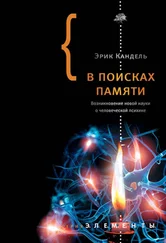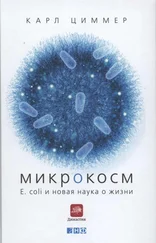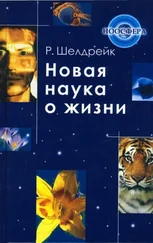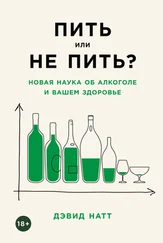18 Haak et al. “Massive Migration”.
19 I. Lazaridis et al. “Genomic Insights into the Origin of Farming in the Ancient Near East”, Nature 536 (2016): 419–424.
20 P. Skoglund et al. “Genomic Insights into the Peopling of the Southwest Pacific”, Nature 538 (2016): 510–513.
21 Lazaridis et al. “Ancient Human Genomes”.
22 Pickrell, Reich. “Toward a New History”.
Глава 1. Как геном объясняет, кто мы такие
1 J. D. Watson and F. H. Crick. “Molecular Structure of Nucleic Acids; a Structure for Deoxyribose Nucleic Acid”, Nature 171 (1953): 737–738.
2 R. L. Cann, M. Stoneking, A. C. Wilson. “Mitochondrial DNA and Human Evolution”, Nature 325 (1987): 31–36.
3 Cann et al. “Mitochondrial DNA and Human Evolution”.
4 Q. Fu et al. “A Revised Timescale for Human Evolution Based on Ancient Mitochondrial Genomes”, Current Biology 23 (2013): 553–559.
5 D. E. Lieberman, B. M. McBratney, G. Krovitz. “The Evolution and Development of Cranial Form in Homo sapiens”, Proceedings of the National Academy of Sciences of the U.S.A. 99 (2002):1134– 39; Richter et al. “The Age of the Hominin Fossils from Jebel Irhoud, Morocco, and the Origins of the Middle Stone Age”, Nature 546 (2017): 293–296.
6 H. S. Groucutt et al. “Rethinking the Dispersal of Homo sapiens Out of Africa”, Evolutionary Anthropology 24 (2015): 149–164.
7 C.-J. Kind et al. “The Smile of the Lion Man: Recent Excavations in Stadel Cave (Baden-Württemberg, South-Western Germany) and the Restoration of the Famous Upper Palaeolithic Figurine”, Quartär 61 (2014): 129–145.
8 T. Higham et al. “The Timing and Spatiotemporal Patterning of Neanderthal Disappearance”, Nature 512 (2014): 306–309.
9 Richard G. Klein, Blake Edgar. The Dawn of Human Culture (New York: Wiley, 2002).
10 J. Doebley. “Mapping the Genes That Made Maize”, Trends in Genetics 8 (1992): 302–307.
11 S. McBrearty, A. S. Brooks. “The Revolution That Wasn’t: A New Interpretation of the Origin of Modern Human Behavior”, Journal of Human Evolution 39 (2000): 453–563.
12 C. S. L. Lai et al. “A Forkhead-Domain Gene Is Mutated in a Severe Speech and Language Disorder”, Nature 413 (2001): 519–523.
13 W. Enard et al. “Molecular Evolution of FOXP2, a Gene Involved in Speech and Language”, Nature 418 (2002): 869–872.
14 W. Enard et al. “A Humanized Version of FOXP2 Affects Cortico-Basal Ganglia Circuits in Mice”, Cell 137 (2009): 961–971.
15 J. Krause et al. “The Derived FOXP2 Variant of Modern Humans Was Shared with Neandertals”, Current Biology 17 (2007): 1908–1912.
16 T. Maricic et al. “A Recent Evolutionary Change Affects a Regulatory Element in the Human FOXP2 Gene”, Molecular Biology and Evolution 30 (2013): 844–852.
17 S. Pääbo. “The Human Condition – a Molecular Approach”, Cell 157 (2014): 216–226.
18 R. E. Green et al. “A Draft Sequence of the Neandertal Genome”, Science 328 (2010): 710–722; K. Prüfer et al. “The Complete Genome Sequence of a Neanderthal from the Altai Mountains”, Nature (2013): doi: 10.1038/nature 1288.
19 R. Lewin. “The Unmasking of Mitochondrial Eve”, Science 238 (1987): 24–26.
20 A. Kong et al. “A High-Resolution Recombination Map of the Human Genome”, Nature Genetics 31 (2002): 241–247.
21 “Descent of Elizabeth II from William I”, Familypedia, http:// familypedia wikia.com/wiki/Descent_of_Elizabeth_II_from_ William_I#Shorter_line_of_descent.
22 S. Mallick et al. “The Simons Genome Diversity Project: 300 Genomes from 142 Diverse Populations”, Nature 538 (2016): 201–206.
23 Green et al. “Draft Sequence”.
24 H. Li, R. Durbin. “Inference of Human Population History from Individual Whole-Genome Sequences”, Nature 475 (2011): 493–496.
25 Там же.
26 S. Schiffels, R. Durbin. “Inferring Human Population Size and Separation History from Multiple Genome Sequences”, Nature Genetics 46 (2014): 919–925.
27 Mallick et al. “Simons Genome Diversity Project”.
28 I. Gronau et al. “Bayesian Inference of Ancient Human Demography from Individual Genome Sequences”, Nature Genetics 43 (2011): 1031–1034.
29 Mallick et al. “Simons Genome Diversity Project”.
30 P. C. Sabeti et al. “Detecting Recent Positive Selection in the Human Genome from Haplotype Structure”, Nature 419 (2002): 832–837; B. F. Voight, S. Kudaravalli, X. Wen, J. K. Pritchard. “A Map of Recent Positive Selection in the Human Genome”, PLoS Biology 4 (2006): e72.
31 K. M. Teshima, G. Coop, M. Przeworski. “How Reliable Are Empirical Genomic Scans for Selective Sweeps?”, Genome Research 16 (2006): 702–712.
32 R. D. Hernandez et al. “Classic Selective Sweeps Were Rare in Recent Human Evolution”, Science 331 (2011): 920–924.
33 S. A. Tishkoff et al. “Convergent Adaptation of Human Lactase Persistence in Africa and Europe”, Nature Genetics 38 (2006): 31–40.
34 M. C. Turchin et al. “Evidence of Widespread Selection on Standing Variation in Europe at Height-Associated SNPs”, Nature Genetics 44 (2012): 1015–1019.
35 I. Mathieson et al. “Genome-Wide Patterns of Selection in 230 Ancient Eurasians”, Nature 528 (2015): 499–503.
36 Y. Field et al. “Detection of Human Adaptation During the Past 2000 Years”, Science 354 (2016): 760–764.
37 D. Welter et al. “The NHGRI GWAS Catalog, a Curated Resource of SNP-Trait Associations”, Nucleic Acids Research 42 (2014): D1001–1006.
38 D. B. Goldstein. “Common Genetic Variation and Human Traits”, New England Journal of Medicine 360 (2009): 1696–1698.
39 A. Okbay et al. “Genome-Wide Association Study Identifies 74 Loci Associated with Educational Attainment”, Nature 533 (2016): 539–542; M. T. Lo et al. “Genome-Wide Analyses for Personality Traits Identify Six Genomic Loci and Show Correlations with Psychiatric Disorders”, Nature Genetics 49 (2017): 152–156; G. Davies et al. “Genome-Wide Association Study of Cognitive Functions and Educational Attainment in UK Biobank (N=112 151)”, Molecular Psychiatry 21 (2016): 758–767.
Глава 2. Встреча с неандертальцами
1 Charles Darwin. The Descent of Man, and Selection in Relation to Sex (London: John Murray, 1871).
2 Erik Trinkaus. The Shanidar Neanderthals (New York: Academic Press, 1983).
3 D. Radovcˇ i, A. O. Sršen, J. Radovcˇ ic´, D. W. Frayer. “Evidence for Neandertal Jewelry: Modified White-Tailed Eagle Claws at Krapina”, PLoS One 10 (2015): e0119802.
4 J. Jaubert et al. “Early Neanderthal Constructions Deep in Bruniquel Cave in Southwestern France”, Nature 534 (2016): 111–114.
5 W. L. Straus, A. J. E. Cave. “Pathology and the Posture of Neanderthal Man”, Quarterly Review of Biology 32 (1957): 348–363.
6 William Golding. The Inheritors (London: Faber and Faber, 1955).
7 Jean M. Auel. The Clan of the Cave Bear (New York: Crown, 1980).
8 T. Higham et al. “The Timing and Spatiotemporal Patterning of Neanderthal Disappearance”, Nature 512 (2014): 306–309.
9 T. Higham et al. “Chronology of the Grotte du Renne (France) and Implications for the Context of Ornaments and Human Remains Within the Châtelperronian”, Proceedings of the National Academy of Sciences of the U.S.A. 107 (2010): 20234–20239; O. Bar-Yosef, J.-G. Bordes. “Who Were the Makers of the Châtelperronian Culture?”, Journal of Human Evolution 59 (2010): 586–593.
Читать дальше
Конец ознакомительного отрывка
Купить книгу
![Дэвид Райх Кто мы и как сюда попали [Древняя ДНК и новая наука о человеческом прошлом] обложка книги](/books/396012/devid-rajh-kto-my-i-kak-syuda-popali-drevnyaya-dnk-i-cover.webp)











